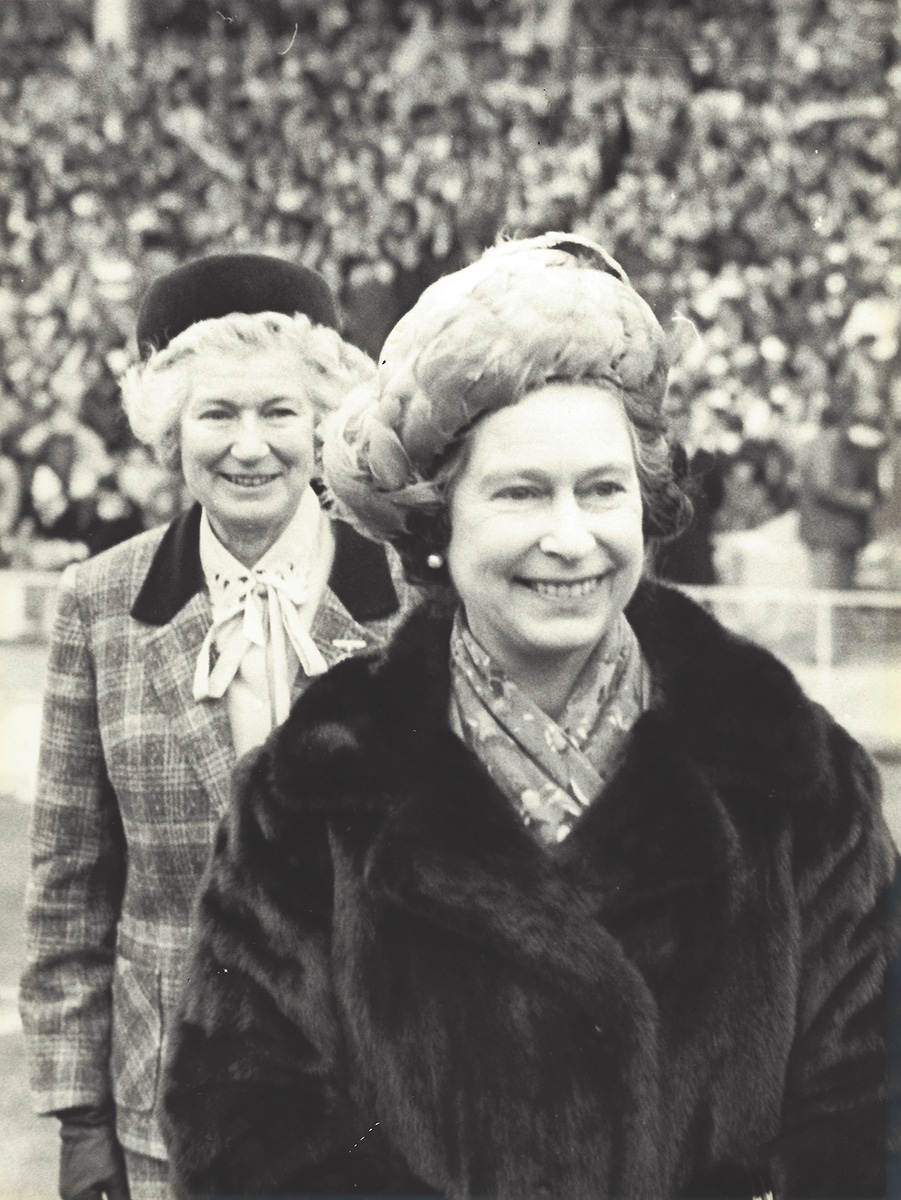England Hockey (EH) and Hockey Wales (HW) have submitted a joint bid to the International Hockey Federation (FIH) to host the men’s Hockey World Cup in 2026. If successful, the tournament would be on the 40th anniversary of the 1986 men’s Hockey World Cup in Willesden, London – the last time the tournament was staged in England and largely considered to be the best Hockey World Cup up to that date.
With the final decision on the 2026 tournament host(s) set to be taken in the first week of November, the two Home Nation governing bodies are calling for your support. Excitingly for The Hockey Museum (THM), it is a bid with a powerful historical resonance and the potential for transformational change in hockey globally – a level of ambition well worth recording in the archives of the world’s only museum of hockey. EH and HW are requesting your support to demonstrate interest in and awareness of their joint bid. Help create history – it will take less than a minute of your time.
Back the bid by registering with either:
Back The Bid | England Hockey Men’s World Cup 2026
Back the Bid | Hockey Wales
At the heart of the England and Wales 2026 bid is a desire to transform the sport, to bring the hockey community together, and reach more diverse audiences.
As part of the transformative bid, four stadia have been selected as venues including the Twickenham Stoop in London, cinch Stadium at Franklin’s Gardens in Northampton, and Cardiff Arms Park. The semi-finals and final would take place at the new and iconic Tottenham Hotspur Stadium in London.
The plan is to take the sport to non-hockey venues and world class stadia across three cities to create a backdrop for audiences nationally and globally.
A Whole New Scale of World Cup: a Wembley Legacy
If successful, 324,000 General Admission tickets will be available for the 36 matches across the tournament, making it the largest Hockey World Cup in history and putting hockey’s spectator capacity on a par with rugby and football. With Tottenham’s 62,850-capacity stadium to host the semi-finals, third vs fourth place and the final, EH and HW have taken inspiration from hockey’s past – in this instance from England Women’s annual hockey international matches at Wembley which ran for 41 consecutive years between 1951 and 1991. At its peak, 68,000 watched England vs Scotland in 1976 – quite something to aspire to! The vibrant crowds and the excited, piercing noise – too loud to hear the umpire’s whistle! – are vivid recollections from everyone who attended or played. Will you help hockey bring that back?
 |
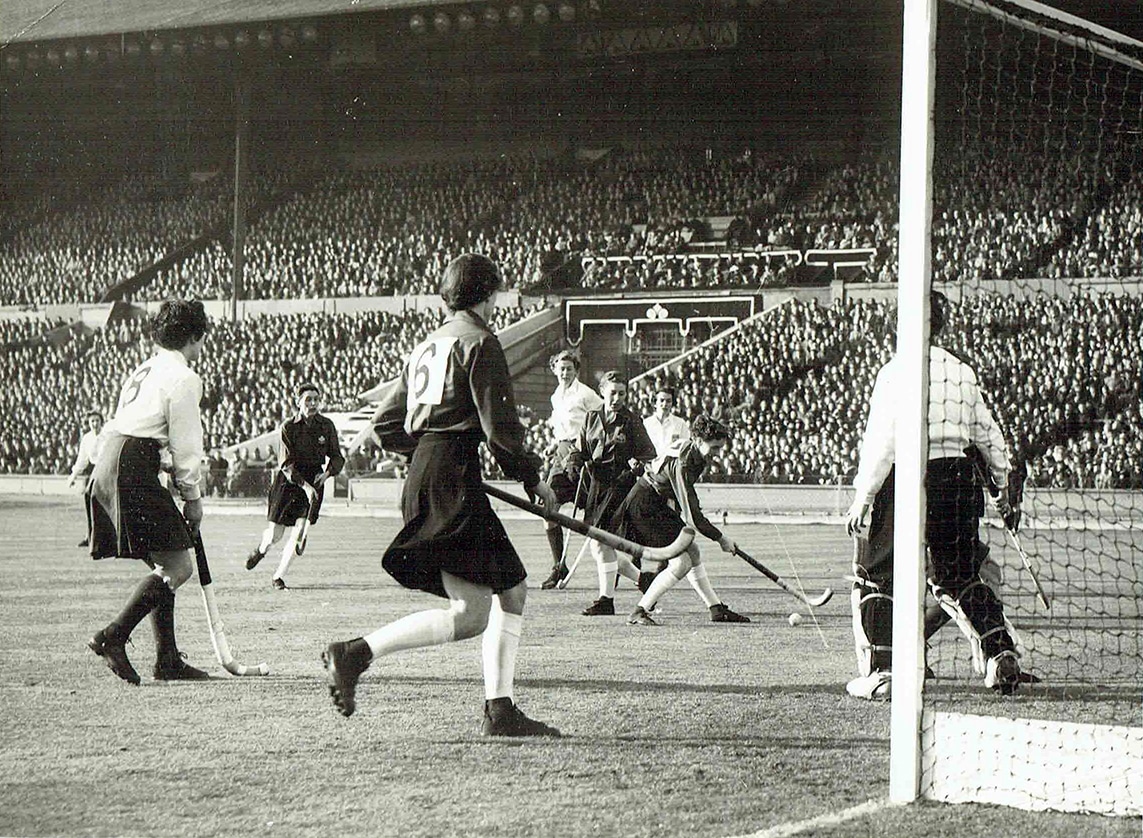 |
|
|
Wembley crowds (1960 vs West Germany) and action from England vs Wales (1955). |
||
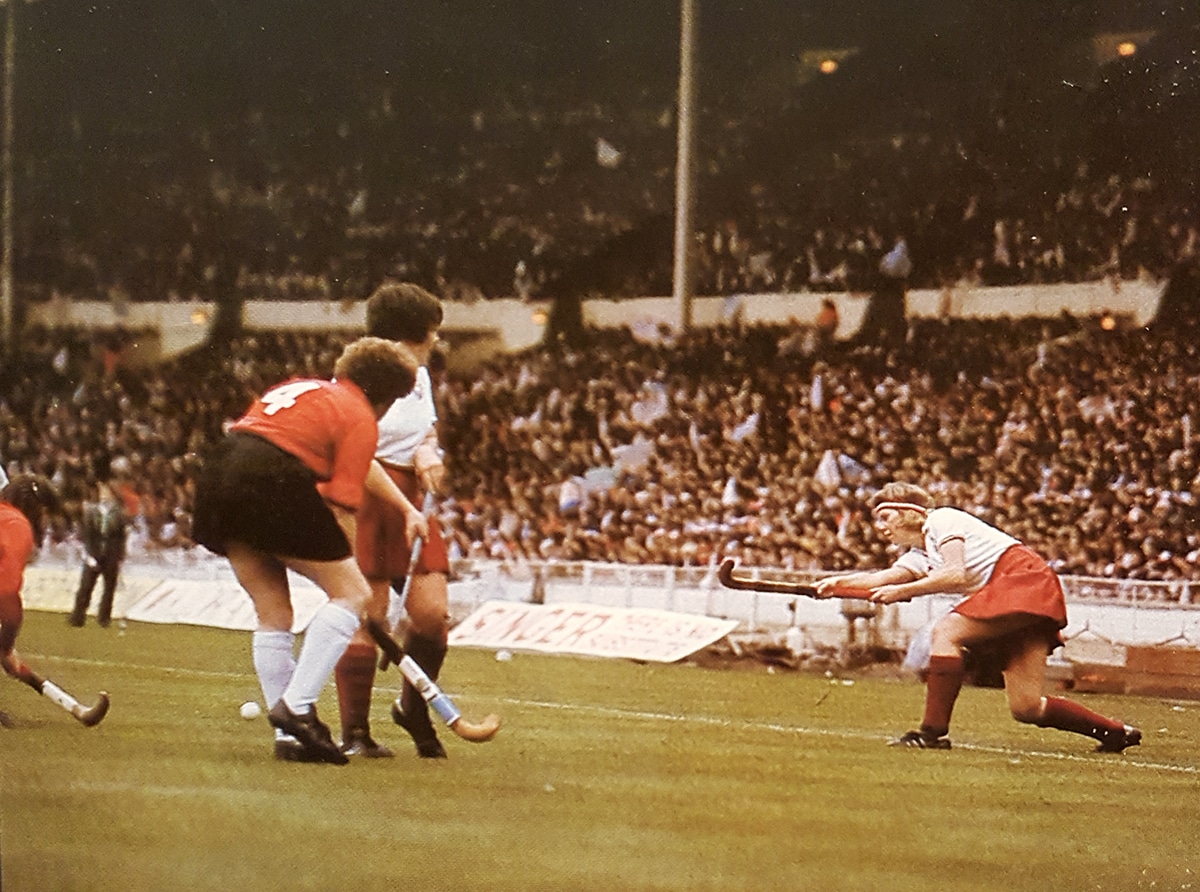 |
|
England vs Wales at Wembley in 1981. |
Big Stadium Hockey: Innovation in Pitch Technology
The move to Wembley Stadium was an ambitious masterstroke for English hockey. Previously women’s hockey internationals were held at The Oval cricket ground, a much smaller capacity venue where hockey matches were limited to 10,000 spectators. A size comparison might be made between Lee Valley Hockey and Tennis Centre (the England and Great Britain Hockey home venue) and the Tottenham Hotspur Stadium. Like The Oval and Wembley, they are simply in different leagues in terms of scale.
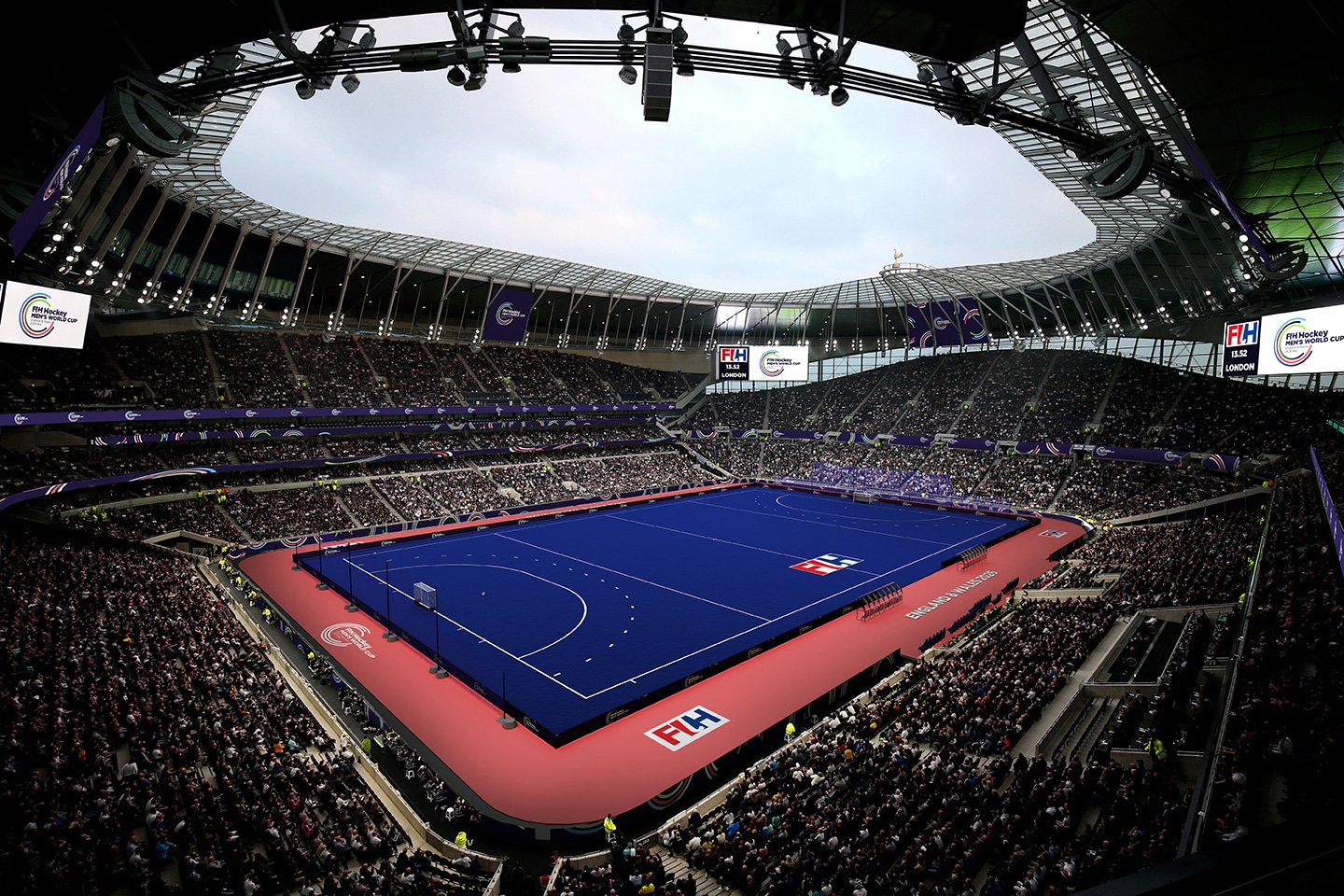 |
|
An artifical turf hockey pitch at the Tottenham Hotspur Stadium. Just imagine a World Cup on this scale! |
Hockey at Wembley Stadium was only possible because this was the era of grass hockey, a surface made obsolete by the invention of artificial pitches. Since the introduction at the Montreal Olympic Games in 1976 and the gradual takeover during the 1980s, our sport has needed custom-built hockey stadia to thrive, however the England and Wales bid will use innovative portable pitch technology to lay a temporary hockey surface in existing stadia.
EH led the significant research and development to make this possible, investing in ‘Big Stadium Hockey’ (BSH) technology. This was used for the first time over a grass pitch at the Twickenham Stoop for the FIH Pro League in 2019 and attracted a crowd of 12,000+. All very adaptable, transferable and welcoming for fans in permanent sports stadia.
Supported by the FIH, the concept is now a proven technology that marks the next era in hockey pitches. Where better to showcase pioneering turf technology than at the Tottenham Hotspur Stadium with pitch innovation literally at its heart? The England and Wales 2026 World Cup bid would see a hockey pitch placed over an NFL (American Football) pitch, after ‘rolling’ the football/soccer pitch away and storing it under the car park!
The bid also has a very strong sustainability focus. The event will work with the FIH’s Official Supplier Polytan who now manufacture pitches from more than 60% organic-based plastic materials and who aim to develop a water-free hockey surface before 2026; a democratising move for hockey intended to make the sport more accessible nationally and internationally.
The England and Wales 2026 World Cup aspires to be a shop window for the new ‘Dry Turf’. In conjunction with ‘Big Stadium Hockey’ products, all of which are made from recycled products, it will leave a legacy of sustainable technology and innovation.
A World Cup for Communities
Most of the spectator base during the Wembley years was hockey-playing schoolgirls who travelled into London by bus and train from across the country.
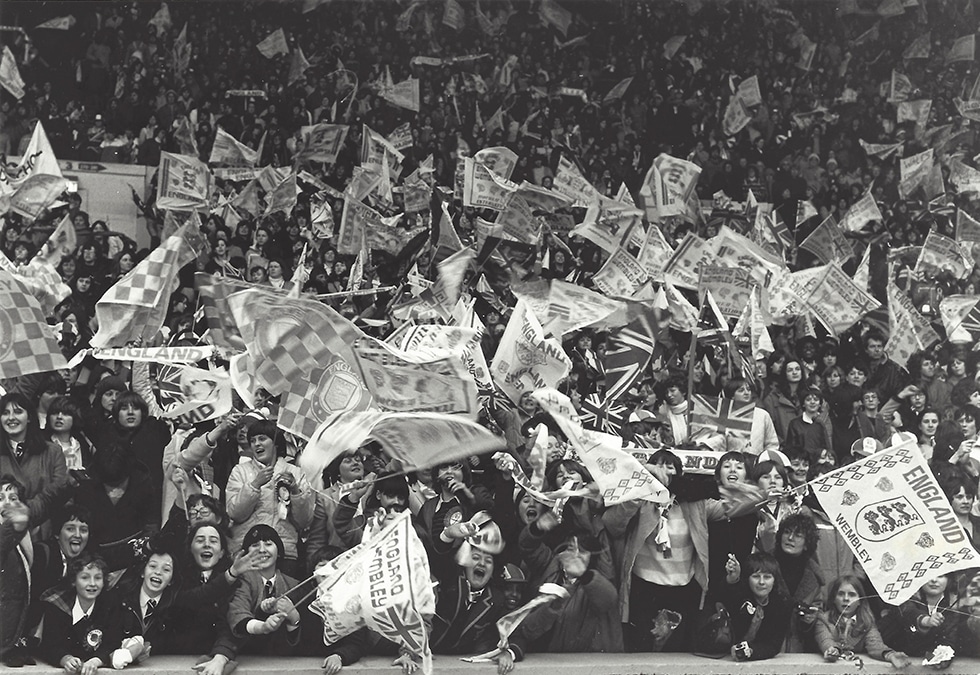 |
 |
|
| Schoolgirl crowds at Wembley Stadium for England women’s annual international hockey match c.1973. Photographs from The Hockey Museum collection / Pat Ward Collection. |
||
The World Cup bid for 2026 will need to draw equally strongly on the hockey family, but EH and HW are working to engage local audiences as well as the host stadia’s sports fans. Partnerships will also target ‘Big Event’ goers and diaspora communities, all drawn to the novelty of Big Stadium Hockey on a rarely seen scale. Just as important for EH, HW and their ten delivery partners is the strong emphasis they place on community and togetherness. Working with the well-established community foundations at the host stadia and hockey clubs across the country, the opportunity to make a difference and use hockey as a vehicle to deliver social impact in the build-up to a home World Cup will be a key focus.
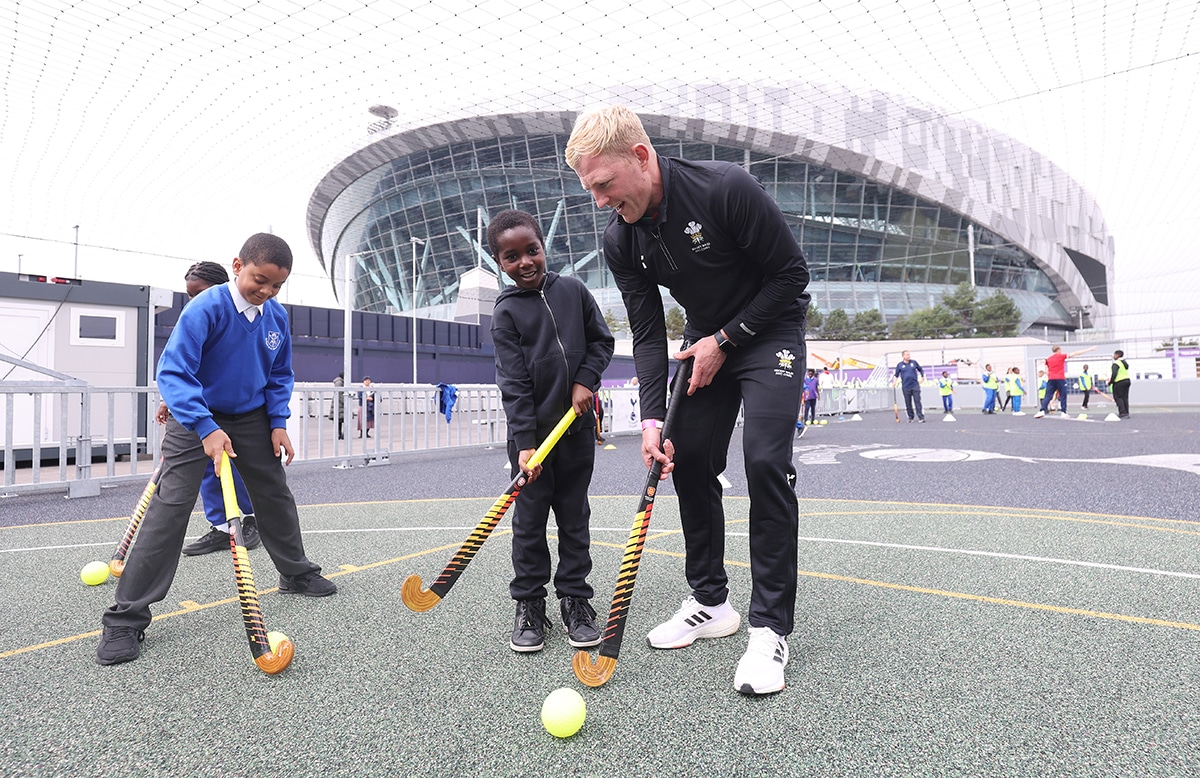 |
|
A community hockey session in front of the Tottenham Hotspur Stadium in North London. |
There is a historical nod too, to the approach taken to organising the last men’s Hockey World Cup held in England, the fondly remembered Willesden (London) World Cup of 1986. For 2026, the England and Wales bid partners plan to create a separate Organising Board to deliver a successful World Cup for the hockey family and local communities without impinging on, or distracting from, the day-to-day operations of both National Governing Bodies.
 |
 |
|
|
Action from the Hockey Men’s World Cup in 1986: England vs Pakistan (left; 3-1 win for the hosts) and England vs West Germany (right; 3-2 win for England after extra time). |
||
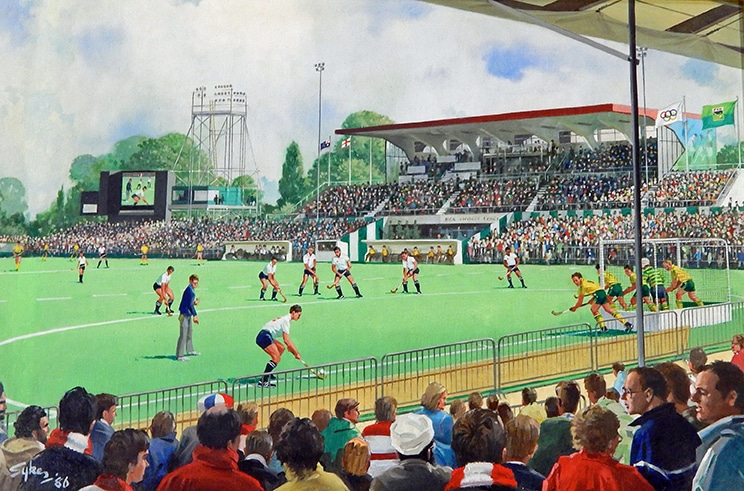 |
|
An oil painting of a penalty corner during the final of the 1986 World Cup in Willesden, London. England would go on to win the silver medal going down 1-2 to Australia who clinched their first World Cup title. |
The plan to take the sport to non-hockey venues and world-class stadiums across three cities will create a backdrop for audiences nationally and globally. A home World Cup will change perceptions of hockey, encourage participation, and benefit local communities. The opportunity to host the World Cup and make it the biggest yet will leave a lasting legacy on the sport across England and Wales. The impact of staging major events in the UK is evidenced by the Commonwealth Games and football’s Women’s European Championship this summer – and there is no doubt a Hockey World Cup can have a similar impact.
The final of any World Cup is a highlight but hosting it at Tottenham’s iconic stadium will be a hockey experience like no other.
After two years of feasibility work, consultation and planning which drew strong inspiration from hockey’s past, the passion and commitment to secure and then deliver this bold, transformative and inspiring event for hockey is very evident. The England and Wales 2026 bid team see this as another watershed moment for the sport which, if successful, will create history anew.
“A time for hockey, a time to transform…. And the time is now”.
 |
|
Wales and England men’s hockey teams visit Tottenham Hotspur Stadium to encourage you to ‘Back the Bid’. |




